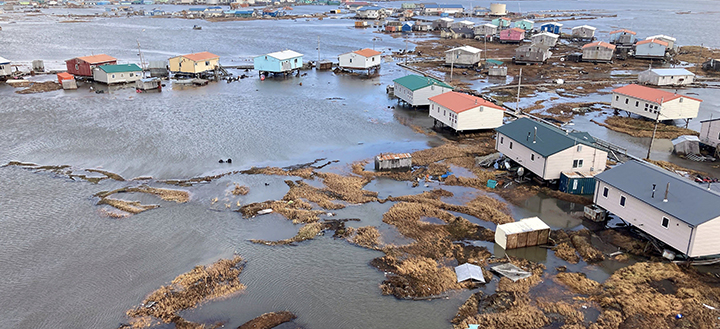Emergency Alert System reliability is critical when disasters strike without warning. In fast-moving crises such as wildfires, where every minute counts, timely alerts can mean the difference between safety and tragedy. But what happens when the very system designed to warn and protect fails at the moment it’s needed most? How do you make sure warnings are received in time to take lifesaving action?
This article explores the importance of effective emergency alert systems, the role of technologies like the Integrated Public Alert and Warning System (IPAWS), and actionable insights for building resilience in emergency preparedness.
The Risk of Emergency Alert System Failures
Failures in emergency alert systems have occurred in the past and have had devastating consequences. Take, for example, the Marshall Fire in Boulder County, Colorado. Hundreds of residents reported that they never received an evacuation alert despite the fire spreading rapidly across neighborhoods. The fire tragically resulted in two fatalities and immense property damage.
The aftermath of the Marshall Fire exposed significant gaps in alert infrastructure. Boulder County lacked full implementation of the IPAWS system at the time, and their siren systems failed to activate according to plan. While efforts to address these shortcomings have been extensive, the incident showed that proper testing and preparedness are crucial when lives are on the line.
Since the Marshall Fire, Boulder County has taken significant steps to strengthen its alert systems. Among these has been the implementation of IPAWS. They’ve also added features that allow emergency dispatch centers to pull public phone databases for alerts, ensuring fewer people are missed.
Enhancements like these show how past failures can serve as opportunities for growth. However, they also emphasize the need for collaboration, capacity building, and constant vigilance.
What is IPAWS and Why Does it Matter?
The IPAWS is a FEMA-supported technology designed to ensure that warning messages reach as many people as possible in a timely manner. Unlike localized opt-in systems, which require residents to manually register for updates, IPAWS utilizes both Wireless Emergency Alerts (WEA) and the Emergency Alert System (EAS). These tools deliver notifications automatically through multiple channels, including mobile devices, radio, television, and NOAA Weather Radios.
Core Features of IPAWS
- Reaches all devices within a defined geographic area, making it ideal for real-time evacuation orders.
- Government officials can send alerts without requiring residents to sign up or provide contact information.
- Supports customizable messages in multiple languages, ensuring accessibility for diverse populations.
By implementing IPAWS, local governments and emergency management agencies can greatly enhance their ability to warn the public during imminent threats, such as wildfires, floods, or active shooters.
How to Prevent Emergency Alert System Failures
To avoid the potential pitfalls of emergency alert system failures, agencies need robust planning, regular testing, and community engagement. The following steps can help keep your systems fully operational when it matters most:
Understand Your Systems
Familiarize yourself with the specific capabilities and limitations of both IPAWS and your local alert systems. For example, supplement IPAWS with local tools, which may allow targeted alerts via text, email, and voice.
Test Regularly
Regular testing identifies potential gaps long before an actual crisis. FEMA requires IPAWS participants to test their systems, but annual or semi-annual testing may not be sufficient, depending on local hazard risks. Schedule quarterly tests to check that systems are functioning as intended.
Include tabletop exercises with partners in neighboring counties, as these can reveal opportunities for cross-jurisdictional coordination, ensuring no gaps during shared emergencies.
Train Your Staff
Even the most advanced systems are only as effective as the people operating them. Comprehensive training programs for emergency managers and dispatch clerks can help minimize human errors. This includes making sure staff are familiar with the IPAWS protocols and decision-making frameworks for activating alerts.
Engage the Community
The effectiveness of any alert system partly depends on public awareness. Educate residents about how to opt into complementary local systems and prepare them to recognize IPAWS alerts. Providing multilingual alert options is another important best practice.
Evaluate and Adapt
Post-event reviews are vital for continuous improvement. After-action reports and public feedback can pinpoint what went right, what went wrong, and where systems can be enhanced.
Wildfire Season and Emergency Alert Systems

Wildfire season presents unique pressures for emergency alert systems. Rapidly shifting fire lines, smoke conditions, and evacuations with little to no warning demand fast, reliable communication. In these situations, every minute matters, and agencies must adapt their alert strategies to account for speed and uncertainty.
Leveraging Redundancy During Wildfire Season
Redundant systems help messages reach everyone, even when primary channels fail. Here are a few systems that help with redundancy:
- Outdoor sirens and loudspeakers
Vital for areas where cell coverage is poor or infrastructure is compromised. - NOAA Weather Radios
Useful not only for storms but also for delivering urgent updates when power and networks fail. - Mobile push alerts and text notifications
Crucial for rapid evacuation orders and real-time route updates. - Local broadcast partnerships
Radio and television stations remain trusted outlets during unfolding disasters.
Communicating During Widespread Disruptions
When wildfires, earthquakes, or other disasters strike, infrastructure may be damaged and communities may have only minutes to act. Emergency management teams should plan for redundancy, simplify messaging, and use multiple channels at once to ensure residents understand immediate next steps.
Post-Alert Follow-Up
In fast-moving disaster scenarios, ongoing communication is just as important as the initial alert. Agencies should issue follow-ups with updated evacuation zones, shelter availability, and road closures, while monitoring how the public is responding. Continuous engagement not only builds trust but also improves compliance when conditions change quickly.
Keeping Your Emergency Alert System Top of Mind
The risks of failing emergency systems during crises like are too great to ignore. By actively implementing tools like IPAWS, conducting regular system tests, and prioritizing community education, government officials and emergency managers can ensure they’re prepared for the worst.
Past disasters are filled with lessons, but true resilience comes from applying those lessons before the next crisis occurs. Ask yourself now: Are your emergency alert systems ready? If not, it’s time to act, refine, and prepare.
For guidance on strengthening your emergency alert systems, reach out to our team. We can help you review your current processes, identify potential gaps, and implement strategies to improve communication and safety for your community.



